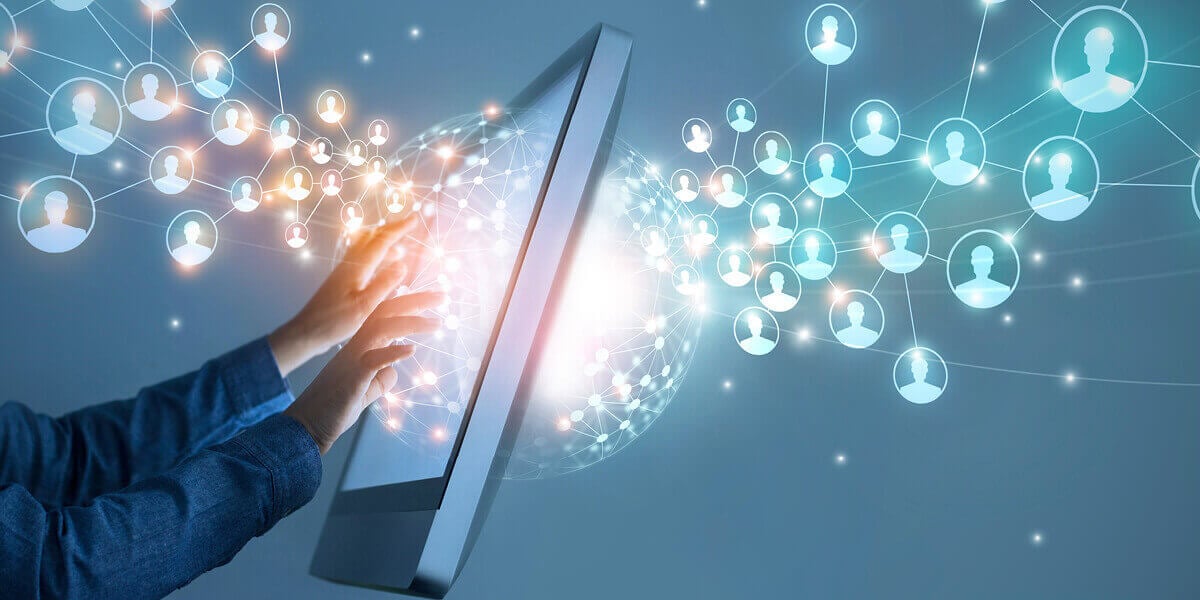Companies should upgrade their digital employee experience to meet the digital literacy and demands of the modern workforce.
Sept. 17, 2021 | By Brian Van Wyhe
By 2040, generation Z (Gen Z) will make up 40% of the workforce, according to Employer Branding Agency Universum. While Millennials can vaguely recall the days of fax machines and dial-up, the Gen Z cohort is the first truly digital-native generation. As school is now in session for younger Gen Zers, let’s look at how they get work done and its implications for every company’s digital workplace transformation.
Companies must prioritize the digital workplace experience to keep the employees energized and productive:
- Enable workplace flexibility through technology and culture
- Guarantee projects move forward with effective sharing and collaboration tools
- Address experience parity in remote and hybrid work by being intentional with productivity tools and your team’s calendar
- Provide secure access anytime, anywhere to company data and applications
- Empower employees with self-help tools
- Build a digital employee experience (DEX) that makes your employees want to be brand ambassadors
- Protect productivity by aligning process and culture with new digital tools
Make the asynchronous work model work for your team
As students across different majors and class schedules collaborate on projects, they can make progress in separate locations across campus during spare moments between English Composition 101 and chemistry lab. Younger workers demand similar flexibility in location and work hours. Employers and managers alike must consider how their technology and culture enable asynchronous work without redundancies or inefficiencies.
Real-time collaboration tools with version control are replacing email attachments
While asynchronous work is a growing trend, there will still be demands for real-time collaboration. Students use tools like Google Docs to collaborate on assignments and see each other’s changes in real time. What does this mean for the modern workplace? Say goodbye to the version-labeled email attachment, just as we have said goodbye to the floppy disk.
This group collaboration means assets in progress can’t be sent as email attachments. Numerous contributors need to see those real-time edits to move projects forward. Use technology to enable both simultaneous and asynchronous contribution. Tools like OneDrive protect version control with tracked changes across contributors while keeping the whole team on the same page.
Remote and hybrid work are here to stay
Remote work, and hybrid work, have become buzzwords as workplaces and learning spaces have modified practices since the beginning of the COVID-19 pandemic. While the term hybrid can be used to describe different workplace environment scenarios, remote and hybrid work are far from new approaches.
For years, commuter students have even built class schedules around only needing to be on campus three days a week. With online learning enabling remote and hybrid schedules, this flexibility allows them to either have a part-time job to support their education or save on commuting expenses like parking and gas.
According to our 2021 State of Digital Transformation Report, over 25% of company leaders found remote work capabilities and device management capabilities for remote management improved from their digital transformation efforts.
Workers have begun to optimize their lives to have more time for taking care of families or reduce their stressful commuting time each week. Employees are going hybrid, so how can you make that work for business productivity and the employee experience? Bring intention to what meetings could be emails, what meetings need video on, what meetings are most beneficial in person. Use collaboration and productivity tools like Microsoft Teams to bridge the gaps between employees working in the office and those working remotely.
Anytime, anywhere access is expected
When swapping stories on how technology has changed the college experience, one of our team members mentioned, “My daughter is in college. She doesn’t have a local installation of Microsoft Word. She’s cloud-first already. She does it all online. It’s all collaborative.”
Leveraging cloud-based applications like Google Sites, often through a university-procured license, college students can access and share their work from any device. The modern workplace requires anytime, anywhere access to corporate applications and data. Help employees become more productive and contributive to group efforts by ensuring secure access to data and systems across their company-provisioned and personal devices.
Companies with Microsoft Office license packages have access to cloud storage with OneDrive included at no extra cost or additional licensing fees. Consider backing up company data securely in the cloud. This move will make it easier to access data on different devices and share work with other end users. In the unfortunate event of a hard drive crashing, important information isn’t lost and unrecoverable.
Use self-help workplace tools for these self-starters
Where Millennial college students used SparkNotes to make the grade, Gen Z has Quizlet as a learning tool and study aid for individuals and groups. What does this mean for the modern workplace? Give employees learning and self-help tools.
Well-versed in problem-solving via search engine results and social media, the Gen Z cohort is more likely to attempt to solve a problem on their own to save time before contacting a support or help desk phone number. Confident in their technical literacy and capabilities, they have been asked to solve tech problems by coworkers from other generations.
Thirty-eight percent of company leaders surveyed at the end of 2020 identified dealing with technology or technical issues as a long-term challenge of remote work.
Savvy employers can use this skill to improve call deflection and any strain on help desk staff. Give employees easy access to self-help and self-healing technologies, FAQs and beginner training videos for new workplace productivity tools.
Is your digital employee experience being reviewed?
From Rate My Professor to Glassdoor, both Millennials and Gen Zers have included review sites in their research before choosing where to learn and where to work. Even when posting about what it’s like to rush a sorority or Excel hacks on Instagram and TikTok, Gen Zers will share their experiences.
How long did a new hire wait for a provisioned laptop and access to company data? How much time are employees stuck on the phone with support for a quick fix like a password reset? Bottom line: How your workforce interacts with workplace technology is part of the employee experience and reflects on your employer brand. Don’t let a poor digital employee experience become the next TikTok trend.
Modern workplace reality: Interruptions are everywhere, all the time
College is a playground of distractions, as parents commonly remind their collegiate children. The buzzing social scene or chatty roommate alone can throw off even the most dedicated student.
Distractions don’t disappear after graduation. While distraction can affect every generation, technology has amplified opportunities for distraction in the modern workplace. Between open-plan offices and workforce collaboration tools like Slack making employees reachable at any time, it’s more than likely your workforce is distracted.
Distractions have a cost. Research from UC Irvine suggests that people will likely compensate by working faster after being interrupted—with more stress and frustration. What could be the long-term consequences? The costs of constant disruption can compound burnout and increase turnover. Technology can help employees work more efficiently, but a meaningful element of the digital employee experience is how office culture meets technology. It’s up to managers and culture leaders to help create that balance.
Companies take note: The modern workplace demands a new approach
Don’t wait for the turning of the tassel to improve your digital workplace experience. Securely provide anytime, anywhere access to company applications and data. Doing so will help get the most out of cloud storage and other tools you have already paid for with your software licensing.
Gen Z is mobile and expects their digital employee experience to mirror a customer experience: painless, personalized and productive. Fueled by the increase in remote work, employees view work as something they do rather than a place they go. Employees expect companies to provide a seamless user experience where they can work from anywhere, on any device. From modern endpoint management to data-driven automation, it’s time to meet the needs of your digital workforce.
About the Author

Since beginning with TEKsystems in 1996, Brian uses experience in digital workplace services as well as complex networking and data center technologies to deliver exceptional customer experiences across industries. Brian oversees strategy, sales, marketing and delivery while building high-performing cultures and cultivating relationships with C-suite clients. TEKsystems Digital Workplace Services is empowering the hybrid workplace and workforce through innovative solutions focused on Intelligent Automation, Modern Endpoint Management, seamless collaboration, predictive analytics enabling agile ways of working—anytime, anywhere and on any device—ultimately leading to enhanced end-user experiences and reduced TCO.
Related Articles

Revamp your digital workplace
Meet the moment. Surpass expectations. Elevate the employee experience with digital workplace services that empower your workforce.